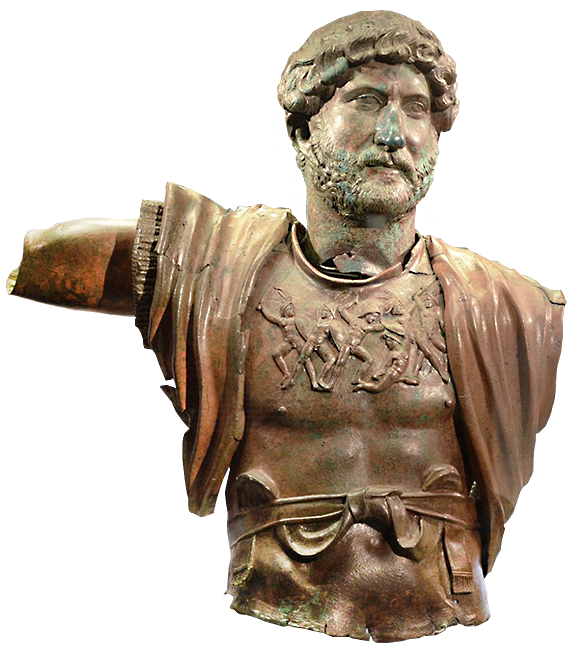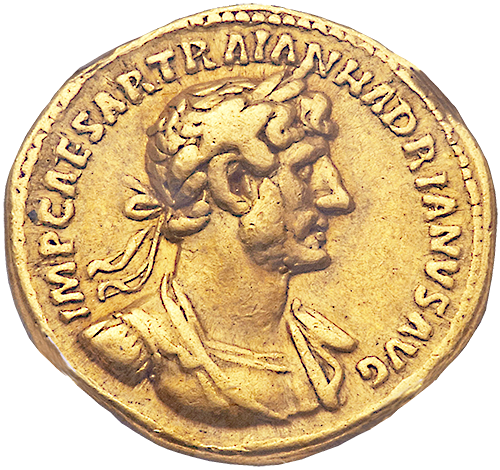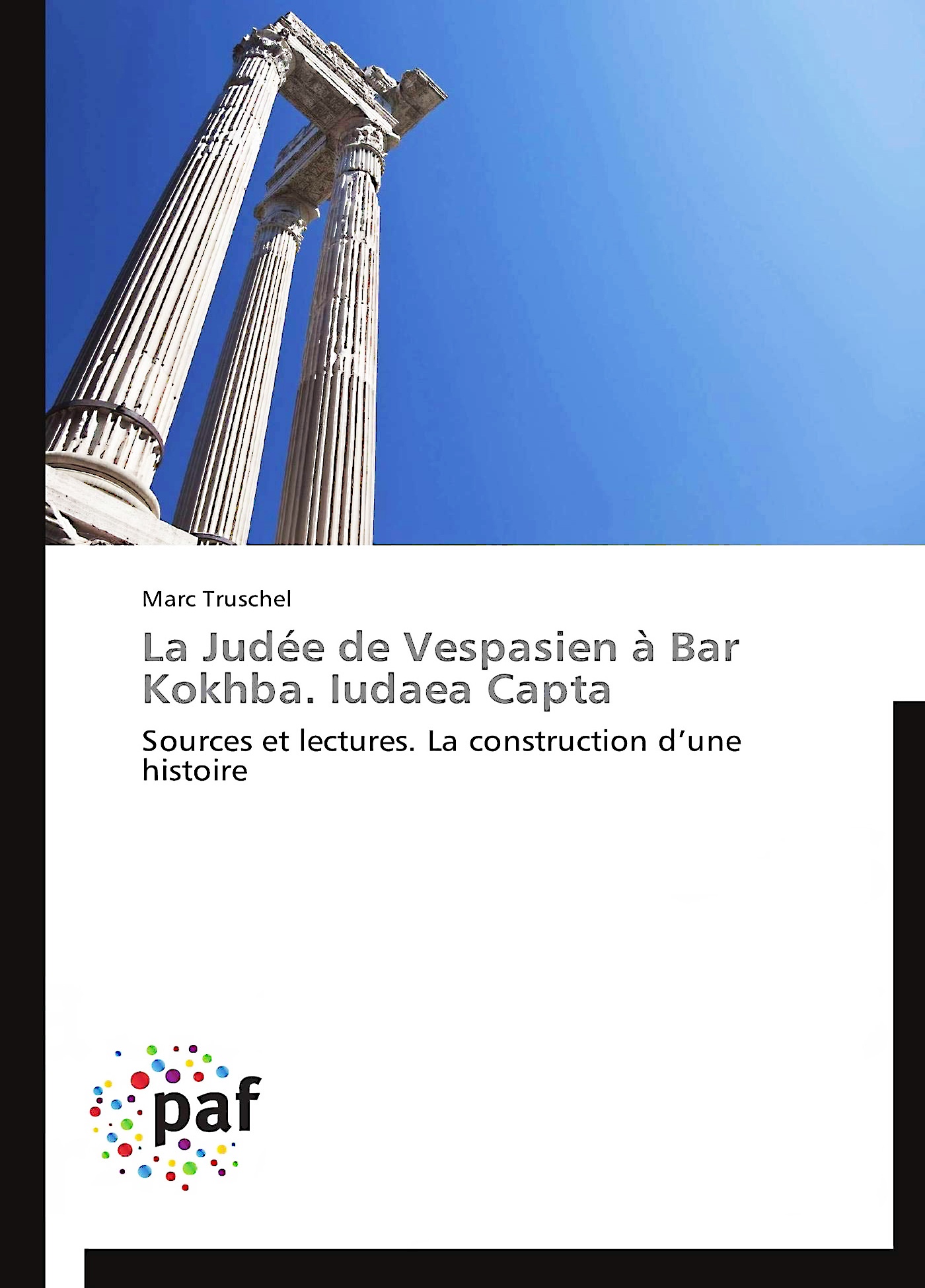
Bible, History, Archaeology
Bible,
History,
Archaeology
Bar Kokhba,
the revolt (132-135 AD)
Contents:
Historical background – Hadrien – Image gallery – Bar Kokhba – TO FIND OUT MORE
The war that tore the province of Judea apart and pitted the Roman Empire against Bar Kokhba under Hadrian's reign seems to have left little trace in contemporary consciousness. The aim here is to understand how this story was told and how it has come down to us.
Historical background

Just 17 years ago, the fiery emperor Trajan reached the banks of the Euphrates, took Ctesiphon and swept down the river to its delta. The Roman Empire was strong, its emperor insolent with glory. But clouds were soon to follow. Jewish riots broke out all over the East, as far away as Egypt and Cyprus, undermining the dazzling work undertaken by the Roman legions in the new province of Mesopotamia. Trajan, attacked from behind, ordered the revolts to be put down, but did not see the results with his own eyes, dying of a sudden illness in 117. In the confusion, Rome lost its new eastern conquest. Hadrian, a protégé of Trajan and appointed during the Caesar's lifetime, took over the leadership of the empire at a moment's notice. He succeeded in re-establishing order and prosperity, a feat praised by court writers well-versed in how to talk about it.
Image opposite: three Roman soldiers.
From left to right: a centurion adorned with torques and phalerae,
- a centurion primus pilus, primipile, the highest rank of a centurion,
- a «classic» legionnaire from the middle of the 1st century A.D. © DR.
Hadrien
Hadrian was a great traveler, and had a deep desire to get to know his empire so he could better manage it. In a climate of renewed peace and tranquillity, he decided during his visit to the East to found a colony in Jerusalem and build a magnificent temple to Jupiter on the site - oh so symbolic - of the site of the Temple, itself destroyed by Titus' armies in 70. In addition, we heard of an imperial decree banning circumcision.
Image opposite: bronze statue of Hadrian discovered in The military region of the VI Legion in Tel Shalem. Israel Museum. Carol FollowingHadrian.
The first battles against the Roman presence in the province of Judea were resoundingly successful. However, the cantonment of legion X remained from the ancient arsenal of Vespasian measures. Fretensis in Jerusalem. In addition, since 70, by decision of the central government, a second legion had been stationed in Galilee, a densely populated region north of Judea. However, despite the large Roman forces present in the province, the Roman army found itself in great difficulty. The governor of the province, Tineus Rufus, needed help to lead the counter-attack. The number of legions engaged in such a small territory is astonishing. There were at least five. To this would be added all the auxiliary units and even part of the imperial fleet. The war effort was so great that the emperor urgently dispatched one of his best generals from the province of Britania. Dread gripped the heart of the Empire. Hadrian had even resolved to move to the scene of the conflict, ordering the best strategists to build him siege machines adapted to the strategy in place.
1. Hadrian's Denarius, obverse: IMP CAESAR TRAIAN HADRIANVS AVG. Laureate bust right.
Reverse: PM TR P COS III Salus seated left, holding patera, feeding a snake © Private collection Marc Truschel.
2. Coin probably dated from the 3rd year of the Bar Kokhba revolt (135/5). On the obverse, the façade of the Temple of Jerusalem (the Ark of the Covenant is visible inside).
On the reverse, the lulav (bundle of twigs) and etrog (a citrus fruit), and an inscription in paleo-Hebrew: «For the freedom of Jerusalem». DR.
Here are the Hebrew terms for the four plant species in Leviticus: 1) etz hadar, or citrus fruits; 2) t'marîm, date palms; 3) etz avot, thick, deciduous trees and 4) arvey nahal, willows. In the 1st century CE, these species began to be identified as lemon, date palm, myrtle and willow. This is what we call them in Hebrew: Etrog, Lulav, Hadas and Aravah.
Bar Kokhba

Image opposite:
Obverse: a Hebrew inscription, vine leaf, “For the freedom of Jerusalem”
Reverse: a palm tree with 7 palms and fruit. “Shimon Prince of Israel. Private collection © Marc Truschel.
Indeed, the Roman Empire's reconquest strategy was to wage a systematic war, advancing from citadel to citadel, where the Jewish fighters had taken refuge. In the end, the Romans followed the familiar pattern of the first war, leading their legions to the heart of the system, the city of Jerusalem. Here, the last siege undertaken was that of the citadel of Betar, where the Prince of Israel had taken refuge. The siege was long and costly in men, but the city fell and marked the end of a conflict, a tyrannical reign and a bloody persecution of Christians who remained loyal to the central power.
Image opposite: an aureus from Hadrian (117-138).
Obverse: IMP CAESAR TRAIAN HADRIANVS AVG. © D.R.
Hadrian decided to found the new colony Aelia Capitolina on the site of the holy city and erect a number of pagan temples. The Roman armies had suffered particularly badly during the three years of war, and for the first time Hadrian did not address the Senate with the traditional formula, “me and the armies are fine”. The trauma was immense. It was on the ruins of this Roman province that a new administrative term was coined to designate it. It would henceforth be called the province of Syria-Palestine (Syria Palaestina).

Find out more
Marc Truschel, Judea from Vespasian to Bar Kokhba. Iudaea Capta.
Sources and readings. Building a story.
The investigation based on the literary corpus will take the reader on a long journey from the writings of Flavian Rome to those of the early Middle Ages. The book offers new perspectives through its historical analysis of the two conflicts that hit ancient Judea hard.
Presses Académiques Francophones. 270 pages.

